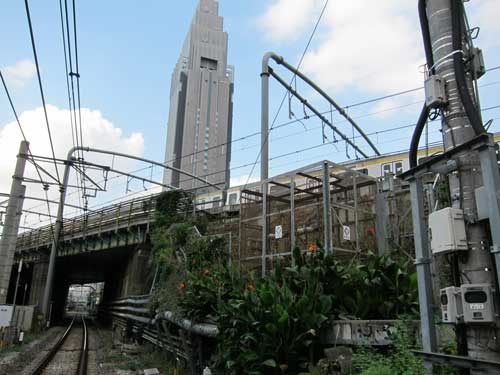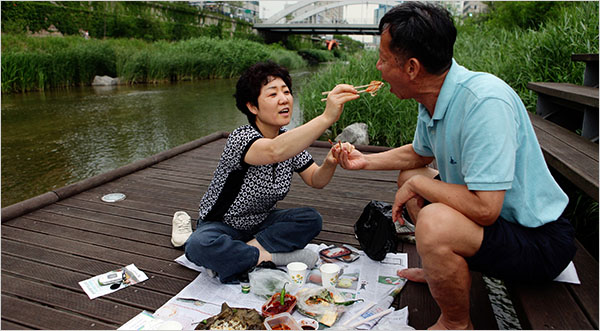
アメリカの子供たちはあまり虫とかをネットでつかまえません。このネットは、小川でも森でも使えます。たったの380円。楽しそうです。
Japanese kids love to use nets to capture small wildlife. This net can be used to capture kabuto mushi beetles on land, and also crayfish in creeks.

何世紀にもわたって、東京湾や運河が変わった。
These NHK images show how, over the past several centuries, Tokyo filled in the bay, built canals, and later, in the last satellite image, filled in the canals. (Via Mutant Frog Travelogue).

I have been thinking about the urban corridors and the distributed real estate that connect city people literally and experientially. Everything from rail lines that take us where we are going to convenience stores that make us feel that we are in the same place no matter where we are. Rail companies and retail chains own or operate so much real estate to make them second only to governments in terms of land ownership and possibilities for remaking our environment.
I love the chaotic, multi-directional rail lines in Yoyogi- two sets of elevated lines and street-grade lines taking traffic from Shinjuku to other parts of Tokyo, towns and resorts to the west, and across Japan. As a pedestrian, the rail crossings slow down your walk and make you aware of the millions of people circulating in Tokyo.
I’ve blogged before about the cool wildflowers with some unplanned cultivation on the sides of the tracks. The rail companies must be concerned about safety, including keeping neighbors safe and also minimizing garbage on the tracks. Yet it’s great that this land exists in a semi-wild state, and cool that it’s so accessible in Yoyogi. I wonder what further uses the lands beside rail tracks and stations could have in cities, suburbs, and countryside. Wildlife habitat, small farms, recreation, bee hives, or other uses.



A great article in today’s New York Times about “daylighting” the Cheonggyecheon River in Seoul. Daylighting refers to uncovering streams buried under pavement. Three miles of elevated freeway were removed, a plant-rich stream restored, and central urban land was converted from car-centric to people-centric.
Benefits include:

Government officials and urban planners from Los Angeles, Singapore, San Antonio, and Yonkers have expressed interest in restoring urban streams. Sadly, the article did not mention anything about Tokyo, where most of its historic canals and rivers are covered by streets and elevated freeways.